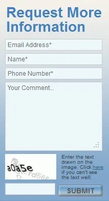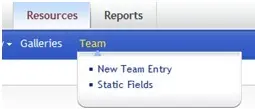Advanced Searches for the Seeker of the Specific
Search features can make or break an online store or other content rich website in the internet age. Every minute that an online shopper spends looking for a particular item makes it less likely they will engage with the business. The shopper will either assume the company does not have what they want, or may even leave because a slow or hard-to-navigate site sends the message that the company does not really care about meeting his or her needs.
Members and Business Directories as part of web presence management
Adrecom’s member and business directories are examples of our employment of database-oriented content. Database-oriented pages are dynamic pages that are linked to an internal database that stores member and business directory information. When a back end user, such as a site administrator or member of our team, makes a change in the database the change is reflected on the front end. Information that exists in the Back Office database is sent to the respective page via programming configurations. This way, every time the page is reloaded the changes will be apparent on the front end.
Adrecom's Membership Management Solutions
While Adrecom’s Solutions and Services for Nonprofits & Associations provides highly organized yet flexible content management opportunities, we as well offer advanced portal solutions for non-profit organizations and associations. Our CMS allows membership-based organizations to manage a high volume of members using our practical technology-oriented platform. Administrators can manage member accounts, online registrations, dues collection and donations and online event management and registrations, to name a few, just by logging into the system. For more complex or customized changes our technical team is available to offer advice to clients or to implement the changes on your behalf.

Lead Generation and Customer Interaction Forms
Communicating with your clients, and allowing them to easily communicate with you, is an essential aspect of running your business. For a long time businesses have commonly used certain technological capabilities to accomplish traditional business practices, one of the most commonly-used being the famous online form. The Adrecom Corporate Portal offers all of the standard configurations, such as text fields, radio buttons and dragdown menus, making it very easy to create the right type of form for your site. This blog post therefore covers two technological key ingredients that have become standard cultural norms in the sphere of webstore buying and selling - lead generation and customer interaction forms.

Team Module Integrated into Adrecom Portal Solution
Given that certain types of customers have specific needs, the Adrecom team has developed and integrated the Team module into their corporate portalsolutions repertoire. Categorized under our Resources section, the Team module was designed for businesses and agencies who wish to renovate their web presence by introducing their team and/or staff to the viewing public.Whereas in the past Team information was created within the general structure of the Articles section, used for creating the major bulk of a website’s content, it has now been set aside with its own module designed with features specifically designed for creating individual team member content.
Products Bundles - A Clever Catalog Strategy
The standard e-catalog product is an individual product. However, in almost every industry it is possible to purchase a series of related products in one complete package, known as a Bundle. Bundles are created based on thoroughly-researched and well-documented shopping patterns and customer preferences.
Bundles are a group of products in your catalog sold together as one item. Like with Related Products, these products are clearly related to one another and complement or enhance usage of the base product. The difference is that they are purchased as one unit together. For example, Lobster's Elite Grand V LE is a bundle made of several products, all listed in tandem.
How Media Elements Enhance E-catalogs
Consider, for a moment, that an e-catalog is a popular way to make the shopping experience very easy for customers. Online shopping has certain perks that shopping at brick-and-mortar stores does not have, such as 24/7 availability and readily-provided information about all topics in the content management system. However, in order to overcome the lack of physical access to tangible items – i.e., the useful tendency of picking up an item and looking at it from all angles – web stores need to make optimal usage of high quality product imagery and other media elements, such as video and flash. This blog post discusses how images and video create are a necessary element of a successful e-commerce product catalog.
B2B Web Presence Renovation
At Adrecom, we service a variety of customers in both the B2C (standard business-to-customer model) and B2B (business-to-business) categories. We have carefully and specifically developed the features and applications found in our Back Office to satisfy the business needs of both types of customers. What is largely true about B2B transactions, however, is that their orders and purchases typically involve a larger amount of raw materials. Such companies can make ideal use of our distributor and wholesaler portal, which comes with a tiered pricing model so we have designed our system to make such tiered pricing models and other essential B2B applications plainly visible on the front end as areas of focus.
Product Catalog Management
Product catalog management is a multi-tiered process that allows you to store, administer and add, edit and delete new and existing items to and from your e-catalog. Using the Adrecom CMS Suite you can manage your media assets by simultaneously exporting and import multiple catalogs in bulk for backup and storage. Since there are a variety of different elements that can be exported and imported, suffice it to say that the process for each is slightly different for each application. This post will provide the conceptual model to understand how each application is exported from and imported to the back office. While this post delineates the conceptual model by which exports and imports are carried out, it does not itself instruct you how to perform exports and imports. Since the process is somewhat complex, we have written a series of manuals describing how to perform exports and imports rather than creating video tutorials.
Content Management Automation, Uploading Images in Bulk
Just as you can upload products in bulk to the Back Office, you can also upload images in bulk, although the process is slightly different. Let’s say, for example, that your e-catalog contains an order of some 3,000 products, and each one needs an image. One way of assigning an image to each product is to manually insert an image into each product. While this method is the recommended one for inserting images into a relatively small amount of products, such as 5 or 10, there is another, more efficient method for inserting images into a large number of products, such as 20, 50, 100 or 1000.
Bulk Image Uploading to the Media Gallery
A popular demand for many websites is to display a specified page designated for images. This is especially relevant for image-heavy websites, and for such sites it is beneficial to contain all their images in a gallery versus on individual pages. If a site contains a high volume of images, the image pages can number in the 100’s or even higher. A better alternative is to create a gallery, in which each page displays thumbnails of each of the relevant or desired images. When the user clicks on or hovers the cursor over the image, a larger version of that image is displayed in a separate window. This methodology achieves the desired result of displaying a high volume of images while avoiding a high number of image pages.
How Promotional Coupon Discounts Work
While coupon usage make up a fundamental part-and-parcel of traditional commerce, it is also true that e-tailers have much to gain from making use of promotions and coupons. This post contains a summary of wise and unwise discount practices and how coupons and promotions are used (and should be) in the world of e-commerce.
B2B – Business-to-Business E-commerce
B2B, or business-to-business, refers to purchase transactions taking place between two or more companies or businesses, usually on a large scale. B2B is different from other forms of transaction types, such as B2C, which is the standard business-to-customer model, or B2G, business-to-government. The main activity of B2B is to provide other companies with the items and parts that they will use on the retailer end. For this reason, the raw amount of materials sold between businesses is greater than those sold within B2C. For example, a retailer sells a finished product combined of several items, all of which were purchased either from one or more vendors. In the last decade, business has taken a considerable turn from brick-and-mortar shops to online transactions, a prominent subset of B2B sometimes known as E-B2B. Business-to-business itself is comprised of several subcategories which will be discussed in this post.
What is Good Quality Writing?
What is Good Quality Writing?
There are several aspects to good quality writing and a well-developed blog post takes all of them into account. Reputation, charisma and appearance are important ingredients in the success of any company and they can take you a long way. However, for writing intensive websites, such as those which inform readers about a plethora of topics, the internal aspects need to be thoroughly developed as well. At the end of the day there just is no way to avoid presenting good quality written material that focuses directly on the subject at hand and conveys information in a skillful manner. Information-heavy sites do not have the luxury of not becoming, if they aren’t already, sources of expertise in a particular field or area or writing engaging blog posts.
Pre-scheduling Blog Posts
The purpose of a blog, amongst many, is to provide an interesting informational platform about one or a variety of related topics. Regardless of what you use your blog for, there is one rule that seems to apply universally across the board regardless of what type of blog you actually have – let’s call it one of the blogging constants.